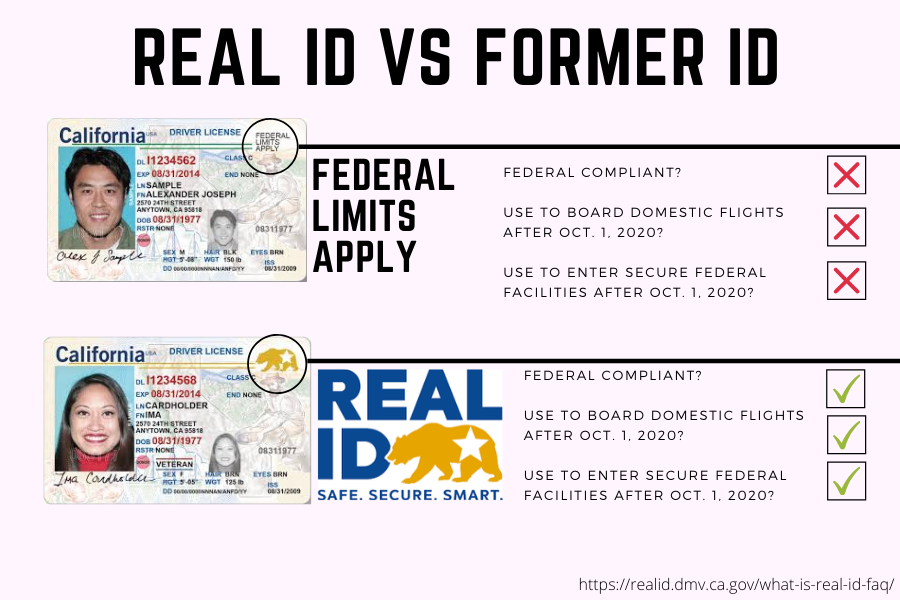Real ID to take effect on Oct. 1
As of Oct. 1, getting on an airplane will require a REAL ID or valid passport. The act does not hold driver license data over the heads of citizens, but rather aims to ensure the safety and security of citizens throughout the nation.
The REAL ID Act, passed by Congress in 2005, enacted the 9/11 Commission’s recommendation that the Federal Government set standards for the issuance of sources of identification. This change comes at a time where national security is at the forefront of national news.
“The act established minimum security standards for license issuance and production and prohibits Federal agencies from accepting for certain purposes driver’s licenses and identification cards from states not meeting the Act’s minimum standards,” the Department of Homeland Security said.
This act has been debated for years leading up to the requirement date, with law officials questioning if this step is needed to ensure public safety. The process of receiving a REAL ID may take several weeks. The steps to receiving a REAL ID are as follows:
“Provide proof of identity (for example: U.S. birth certificate, U.S. passport, certificate of naturalization or citizenship, employment authorization document, permanent resident card or foreign passport with an approved form I-94),” the Department of Motor Vehicles said. “Show two forms of California residency document (for example: utility bill, rental agreement, mortgage bill or medical document). Present proof of your Social Security Number (for example: Social Security Card, W-2 form, SSA-1099 form, Non-SSA-1099 form or Paystub (with full SSN).”
These are the only requirements for obtaining the new ID that would allow citizens to fly domestically and internationally. These steps are streamlined and made simple for all to follow.









